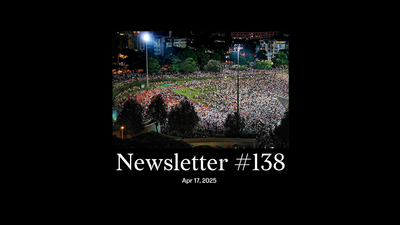Dear reader,
Happy year of the rabbit!
Among the celebrity rabbits around are Michael Jordan, Angelina Jolie, Indranee Rajah and Jamus Lim. I’m not sure what exactly characterises “rabbits” because the internet is flooded with definitions. Here’s one from our self-proclaimed, “credible, trustworthy” source, The Straits Times (ST): “...gentle, peace-loving folk who keep their living space neat and tidy, but they are also guarded and cautious people who do not open up easily.”
ST asked some “bunny babies” about their new year plans. Their answers were reassuringly true to form. Jonathan Chew (24 this year), MasterChef Singapore 3 winner, said he’ll be cooking nasi ulam, pen cai and a White Rabbit Candy Swiss roll—the right mix of Malayan and nostalgia that many contemporary Singaporean chefs embrace.
Lim (48) of the Workers’ Party said that he was swapping salmon for chicken in their curry because his wife and he are pescatarians—further proof, after his ode to panettone, that he’s as comfortable in Sengkang as in Tiong Bahru. Rajah (60) of the ruling People’s Action Party spoke about making claypot rice for her mum and having to work over the break—Singapore’s ministers, weighed down by their obscene salaries, never fail to tell you how hard they’re working.
If some things about Lunar New Year (LNY) were familiar, others were different. This was Singapore’s first post-Covid LNY without restrictions. Back to visiting many rellies? For some, yes, including those rushing home to see family in Malaysia.
But for others, no. It seems, both from conversations and from what I read, that many Singaporeans are quite fine with the shorter social circuit. Some younger ones are replacing some family time with friends–blackjack and mahjong, perhaps, or outings with non-Chinese, eager to include the typically excluded.
Another Covid-inspired shift that might stick is from paper to electronic ang paos, with banks reporting volumes about 30 percent bigger than last year. Holiday partners are also now a thing. Singaporeans who need to “show face” (keep up appearances) in front of nosey aunties—who love to share their unsolicited thoughts on weight, job, and partner—can now rent a “boyfriend” or “girlfriend” on digital platforms for between S$60 and S$400 (excluding holiday surcharges) for a two-hour date, as we write in Singapore This Week.
All this, on top of the recent news that China’s population fell last year for the first time in six decades, has made me wonder if we are past peak-LNY. There are many facets to this long-expected demographic turning point: from China’s shrinking labour force and ageing population to the apparent psychological blow of India soon overtaking China to become the world’s most populous country.
Yet the one that’s been on my mind is the change to one of the world’s monumental festivals, with its mass migrations across the Mainland to its localised expressions, such as pineapple tarts and other kuihs, among the many diasporic communities. Given that Chinese-majority countries such as Singapore and Taiwan have also had trouble getting their citizens to, well, be a bit more like rabbits, from here on, it seems, fewer and fewer people will be celebrating LNY.
In the opposite direction, growing in strength and influence by the year, is the Angkor Photo Festival. While LNY can be an insular occasion—relatives congregating to the exclusion of those outside—Angkor is a celebration of Asia’s diversity, as younger and older photographers gather to learn from each other and interact with anybody who walks through its open doors. And while LNY can sometimes be stuffy, ritualistic and overbearing, with individuals forced to present a fixed image, Angkor is unstructured and liberating.
Last week, we published a “Postcard from Siem Reap” that focused heavily on it. And this week, we’ve just released a photo essay, “Gender and sexuality explored: Singaporean photographers at Angkor”, which features the work of three Singaporeans who attended the workshops over the past 16 years.
Many workshop attendees speak of the artistic and personal freedom they felt over that one week in Siem Reap, which in turn enabled their work. It’s important that we cherish these events and festivals, and perhaps try to imbibe some of their values locally. Rabbits, “guarded and cautious people who do not open up easily,” might appreciate the space.
Gong Xi Fa Cai,
Sudhir Vadaketh
Editor-in-chief, Jom
If you've enjoyed our newsletter, please scroll to the bottom of this page to sign up to receive them direct in your inbox.






